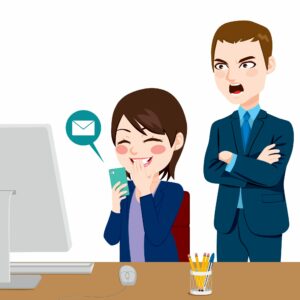Distractions and procrastination can eat away at vast chunks of time and resources at a dealership. Eliminating them is essential to creating a positive, productive workplace environment. To do so, you’ll need to pinpoint their sources and employ strategies to minimize these negative behaviors.
Doubling Down on Distractions
Distractions don’t just cut down on work; they can also destroy a dealership’s atmosphere. Distracted workers tend to feel that their environment is chaotic, and that lack of control can translate to anxiety and irritability. These, in turn, create a sour mood for everyone trying to work, and even, at times, the customers.
There are four primary sources of distraction found in workplaces today.
- Smartphones and other tech
- Multitasking
- Noise
- Meetings
Smartphones and Other Tech
These little devices are incredibly distracting. Checking phones can take up large portions of the day. Dealerships wanting to help their employees focus can institute phone-free zones or require all cell phones be switched to silent during work hours.
Note: The internet in general can also be extremely tempting. Many companies install smart filters and other controls to help employees resist Google, Facebook, and YouTube rabbit holes.
Multitasking
So far, the science seems to indicate that multitasking is impossible. It’s hard to focus when you’re being pulled in so many directions. Each task added reduces a person’s ability to perform well on all the tasks at hand. To help cut down on distractions from multitasking, make sure dealership work gets strategically distributed so that no one is working on more than one thing at a time.
Noise
Ringing phones, people walking around, doors opening and closing; offices are generally noisy places. In addition to audible noise, there can also be a lot of visual noise in the form of cluttered walls, desks, and space.
Help cut down noise-related distractions by reducing mess, simplifying workspaces, and creating noise-canceling spaces. If you don’t already have a breakroom where employees can talk, set one up away from the main workspace, and encourage all conversations to take place there.
Meetings
For fans of The Office, this distraction will sound familiar. Unnecessary meetings break workflow, waste time, and distract from essential tasks. Try to reduce meetings to set times, like a fifteen-minute scheduled overview, or weekly report.
Pulling the Plug on Procrastination
Procrastination can take many forms, often looking like industriousness. A procrastinating employee might appear hard at work, clearing their inbox, straightening workspaces, or offering to help others. As great as all these things might be, they distract from the problem: there is something they don’t want to be doing.
Help your staff beat procrastination in several ways.
First, make sure tasks are manageable. Too large, and the overwhelming nature of all that needs to be done leads to avoidance. If something big is on the agenda, break it down into smaller steps.
Next, implement clear deadlines to help staff stay on track. A ticking clock can be a strong motivator, and even if they push the task off until the last possible moment, it still will get done by the time you need it finished.
Finally, help make doing work exciting with reward systems for when your staff hits milestones in projects they would otherwise avoid. Creating a sense of healthy competition through public progress charts or offering perks to the first three people who finish their work can help motivate employees to tackle otherwise undesirable tasks.








